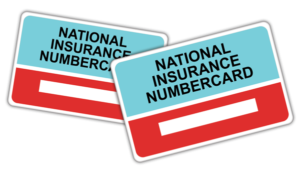Blog
Posted April 13, 2020
What is National Insurance and do I have to pay National Insurance?
National Insurance is pretty complicated with all the different classes so below is a brief summary of the current NIC regime. All the rates mentioned below are for the 2020/21 tax year.
What is National Insurance?
NIC is a tax on earned income, it is divided into different classes. Class 1 is paid on employment earnings with Classes 2 and 4 being paid by self-employed individuals. Individuals who do not pay either Class 1, 2 or 4 NIC may choose to pay voluntary Class 3 NIC. This will provide them with an entitlement to the State Pension and other state benefits.
National Insurance for the Employed – Class 1
Employees aged between 21 and the state pension age pay Class 1 NIC at a rate of 12% on their earnings between £183 and £962 a week and 2% on any weekly earnings above £962. Employers pay secondary contributions of 13.8% of earnings above the £183 a week. There is no upper limit for employer contributions.
National Insurance for the Self-Employed
Self-employed individuals pay Class 2 and Class 4 NIC. They pay a flat rate Class 2 contribution along side variable Class 4 NIC based on the taxable profits of their trade. This is paid at a rate of 9% of profits between £9,500 and £50,000, a rate of 2% is applied to any profits in excess of £50,000.
Class 2 NICs
If you are self-employed you will pay Class 2 NIC at a rate of £3.05 per week as well as Class 4 NIC.
Voluntary NI – Class 3
If you have any gaps in your National Insurance record you may not have enough years of NI contributions to receive the full state pension. If this is the case, then you are able to pay voluntary contributions (if eligible) to fill any gaps. Class 3 NI is £15.30 per week
SERVICES
LATEST NEWS
CATEGORIES
- Blog (137)
- Business Advice (45)
- Just For Fun (16)
- Tax Tips (30)
- Video (8)











